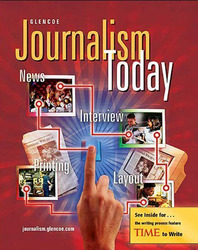
Journalism TodayChapter 6: Writing News Story LeadsOverviewLeads, or the first paragraph of a news story, should grab the reader's attention. Often, journalists use the inverted-pyramid format of newswriting to seize readers' interest. In this format the most important information appears in the lead, or at the beginning of the story, and the facts become less significant as the story progresses. Although this format is fading somewhat in the face of changing news values—more soft news, less hard news—using it provides many advantages. This format gets to the point quickly, is a natural way to tell a story, is an aid to the headline writer, and can be trimmed from the bottom if it is too long. Working particularly well with the inverted-pyramid format, AP, or summary, leads are brief, concise, and filled with information. These leads follow a formula, which begins quickly with the news and follows with attribution, the verb, its subject, and the time element. Leads should be creative and interesting, making use of the best material the writer has, while maintaining objectivity. All stories must include the 5 W's and the H (who, what, when, where), but not all in the lead. The lead should include only the best elements of these or those that introduce your take on the story. Writers should avoid leads made up of only a quote or a question or leads that are excessively long or opinionated. Leads should never state the obvious or contain too many peripheral points. |  |















